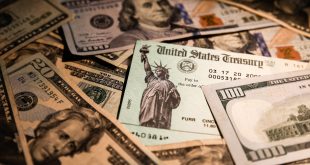US inflation data for April came in softer than anticipated on May 13, 2025, driving a rise in US Treasury yields across the curve and capping gold’s potential rebound, while market expectations for Federal Reserve rate cuts diminished. The Consumer Price Index (CPI) reported a modest 0.2% month-on-month increase, following a 0.1% decline in March, against forecasts of a 0.3% rise, while annual headline inflation eased to 2.3% from 2.4%. Core CPI, excluding volatile food and energy, rose 0.2% monthly and held steady at 2.8% year-over-year, signaling persistent underlying price pressures that have reshaped monetary policy outlooks and bolstered real yields.
The inflation report, combined with the recent US-China 90-day tariff truce—slashing duties to 30% on Chinese imports and 10% on US goods—has shifted market dynamics, pushing the US 10-year Treasury yield up by over two basis points to 4.495%. Real yields, reflecting the gap between nominal yields and inflation expectations, climbed three basis points to 2.21%, exerting downward pressure on gold, which struggled to rebound despite the softer inflation figures. Investors are now focused on May’s CPI data, expected to better capture the tariff rollback’s impact on price trends, as inflationary pressures from trade policies remain a key concern.
Market sentiment has also adjusted, with traders scaling back Federal Reserve rate cut expectations from 76 basis points to 52 basis points, reflecting confidence in a firmer inflation backdrop and the trade truce’s positive economic implications. The Fed’s likelihood of maintaining rates at 4.25%-4.50% in July rose, as the cooling headline inflation failed to signal an immediate need for policy easing, despite the annual CPI marking its smallest 12-month increase since February 2021. This shift underscores a cautious Fed approach, balancing inflationary trends with global trade developments that could influence future price stability.
Gold prices, meanwhile, faced resistance, with spot gold trading at $3,244.90 an ounce, up just 0.25% on the day, as rising real yields and a stronger US Dollar (DXY at 101.30) limited its safe-haven appeal. The interplay between cooling inflation, climbing yields, and evolving trade policies highlights a complex landscape for investors, with gold’s near-term trajectory dependent on upcoming economic data and Fed signals. As markets await May’s inflation figures for clarity on tariff effects, the current environment suggests a cautious outlook for gold amid renewed economic optimism.

 Noor Trends News, Technical Analysis, Educational Tools and Recommendations
Noor Trends News, Technical Analysis, Educational Tools and Recommendations




